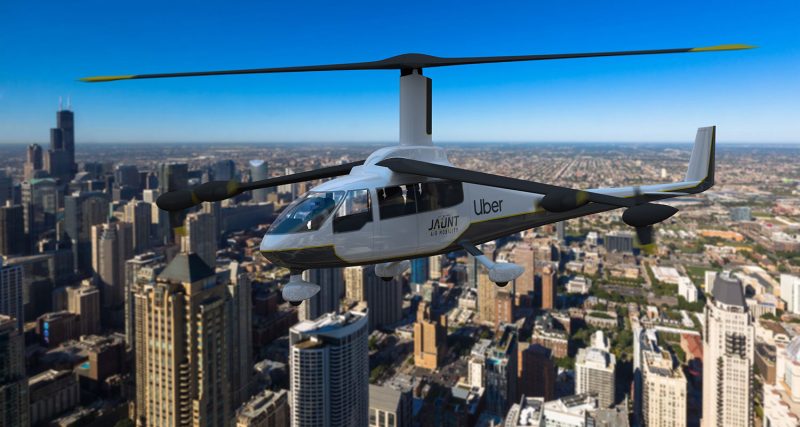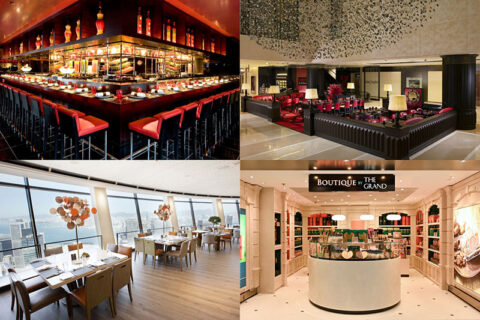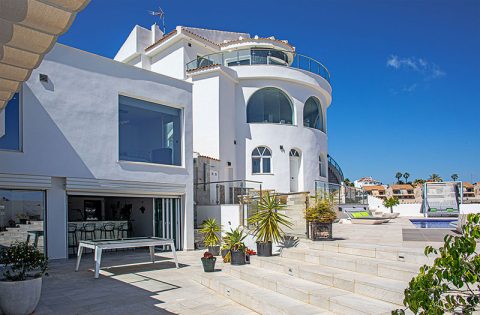Have you ever dreamed of skipping that morning commute to the office and hovering over the congested roads that snake their ways through the urban areas of your city? Well, that dream may soon be a reality thanks to Kaydon Stanzione and Jaunt Air Mobility.
The transformative aerospace company is developing cutting-edge technologies that will change the ways in which people move around urban areas. Jaunt’s Vertical Take-off and Landing aircraft is already changing the possibilities of what urban transport can be in the future.
Jaunt offers incredible potential to potential investors and passengers who could one day travel in its eVTOL vehicles. It is a bright future for Jaunt and how individuals move from one place to another.
Kaydon, Jaunt Air Mobility is a transformative aerospace company focused on developing advanced air vehicles that incorporate innovative technologies and management strategies. Can you start off by telling us about the company and the work it does when it comes to aerospace vehicles?
As an early stage transformative aerospace company, Jaunt Air Mobility designs and manufactures electric Vertical Take-off and Landing (eVTOL) aircraft for Urban Air Mobility (UAM). Our aircraft is designed to be the quietest, safest and most efficient aircraft entering this market. Along with a highly experienced leadership team, we are working with a number of the top global aviation and aerospace companies to bring the best expertise and technology in the field. The Jaunt aircraft is a compound aircraft that combines the best features of a helicopter and an airplane. As a result, Jaunt is the only aircraft currently being developed for UAM that is capable of meeting the current FAA standards without requiring special consideration.
Has the company’s growth exceeded expectations in its first year of life?
Yes and No. Yes, in the sense that it is exhilarating to see the degree of progress the Jaunt team has made in such a short time! In fact, the number of world-renowned aviation companies that have joined in the development of our aircraft clearly confirms our expectations. This is further supported by the rapidly growing network of operational and support partners that maximize Jaunt’s ability to provide safe and affordable, high-tempo service once we are in production. And, being selected as an Uber Elevate partner out of hundreds of competing aircraft companies certainly adds to those credentials. On the other hand, the challenge for any aviation company is investment, as developing and certifying an aircraft requires considerable funding. As a one-year old company, Jaunt is very early in the funding stage, which has been hampered by the onset of the Covid 19 pandemic. , Jaunt recently released its investment book which is currently receiving very positive results. Fortunately, our investors recognize the significant growth potential in this new, transformative segment of transportation. Jaunt will not only bring an enhanced quality of life created by the positive environmental impact of its zero carbon emissions, but will also minimize the financial cost and time burden caused by the continuing growth of urban highway congestion in addition. We attribute our success, not only to Jaunt’s superior design, but additionally to our multi-modal mission capabilities, which competitively differentiate us from traditional passenger transport vehicles. Jaunt has aircraft variants that are positioned in four markets: 1) Jaunt Journey for Uber Air Taxi, 2) Jaunt Ambulance (our Jambulance) for air ambulance; 3) Jaunt GEAP (“jeep”) for cargo, and 4) Jaunt Joust for law enforcement and military applications. Jaunt’s diversity minimizes risk by utilizing one aircraft certification program for four revenue channels.
According to Stanzione, ground to air transport will be seamless. Uber Elevate will make it possible for customers to search for and book transport from both ground and air vehicles. It is an incredible option and the future of people moving around cities through the air is nearly upon us.
The company designs and builds piloted and autonomous flying machines that improve how people and packages seamlessly move within urban environments. How easy and convenient is it for individuals to move within urban areas thanks to Jaunt Air Mobility’s machines?
Very easy. However, it’s not just about the aircraft! As an Uber Elevate partner, passengers will be able to book both their Uber ground transportation and connecting Jaunt flight using the same app. Ground to Urban Air transportation will be seamless. Jaunt is simultaneously partnering with top design, construction, and energy companies to develop the Urban Air Mobility ecosystem – the infrastructure needed for all of us to access this transportation mode. That means, in addition to the Uber Skyports near major cities, there will be new infrastructure in place to support Jaunt passengers at the hundreds of regional airports and remote locations around the world.
Kaydon, you are a serial entrepreneur with over 30 years of experience in advanced technology developments. What drew you to working with Jaunt Air Mobility?
As an entrepreneur, aerospace engineer, former commercial pilot and electric airplane model builder, I was fascinated by the future of both piloted and autonomous electric flight. The many benefits of electrifying flight have always been in my vision. It offers a clean, green, safe, quiet and lightweight alternative to traditionally powered flight. With the innovation of Distributed Electric Propulsion (DEP), aircraft configuration designs that were previously unaffordable or complex engineering challenges became a reality. As novel electric aircraft designs began changing the model aircraft business, I saw these designs ultimately becoming the basis for piloted aircraft configurations by many entrepreneurs.
Earlier, during my career in supporting the US Department of Defense and US Special Operations Command, I had the opportunity to evaluate a new VTOL technology called Slowed Rotor Compound which was introduced by Carter Aviation, an early stage aircraft development company; it was an amazingly efficient VTOL technology. However, it was not right for the military at that time. As other aviation technologies began to make eVTOLs possible, such as fly-by-wire and battery management, I was able to form Jaunt and acquire the Carter technology. This gave Jaunt a significant advantage in developing the optimal aircraft design for the UAM market. The advantage for Jaunt having a reduced rotor operating speed aircraft is that it is significantly quieter and faster than a traditional helicopter and it creates exceptional flight efficiency. The combination of electric power combined with our reduced operating speed rotor capability makes the Jaunt Journey the quietest and most operationally efficient eVTOL being built.
Stanzione has a long history in the aerospace industry. He previously worked for Boeing, which afforded him a strong foundation as an entrepreneur. Stanzione’s experience with the American aerospace company is still enabling him to succeed all these years later.

Kaydon Stanzione. CEO of Jaunt Air Mobility LLC
You were previously a senior engineer at Boeing. How does your work with Jaunt Air Mobility differ from what you did with Boeing? Do you feel you are advancing aerospace technology at Jaunt Air Mobility more than with your former employer?
My experience at Boeing in the early 1980s definitely provided me with a strong foundation for growth in my career in the VTOL industry. I was part of a small eclectic team of leading VTOL innovators examining all powered and unpowered concepts to fly vertically and fast. This was a great opportunity to be a lead participant in the development of advanced analytical modeling, simulations, powered model testing, and flight testing on some of the most innovative aircraft designs. Today, there are some 250 novel electric and hybrid aircraft designs that are in various stages, from concept drawings to piloted and non-piloted flight. After leaving Boeing, I was able to build a successful independent aircraft design and evaluation company which provided a wide range of services for the Department of Defense and major aircraft manufacturing companies. During this timeframe, I had the opportunity to evaluate many exact or similar versions of the novel designs which I had developed during my Boeing days. These experiences have prepared me for the challenges of building a company to design and build our Jaunt transformative eVTOL aircraft. Jaunt advancements are on the cutting edge of design and technology and are overcoming challenges that have stymied aircraft configuration designers going back as far as 1932. Yes, I do feel that Jaunt is advancing innovation in a methodical, evolutionary process. The enabling technologies for electrification, advanced flight controls, materials, and manufacturing are just some areas that will change how aircraft of the future are designed and built and will also impact other adjacent markets.
In an article from Business Airport International, it claimed urban air taxis could be hovering above major urban areas in the next five years. How close are we to having urban air taxis as a common method of transport?
The continually rising cost of urban congestion is the key driver in advancing eVTOL transportation. The cost of urban traffic congestion in the US in 2019 is estimated at $146 billion, including workers sitting in traffic, increased cost of transporting goods through congested areas and wasted fuel, among other factors. Data from major consulting firms suggests the global market could be upwards of 25,000 to 30,000 eVTOL aircraft by 2035.
Uber has publicly announced their Skyport design for Dallas, Los Angeles, and Melbourne, Australia. These three cities will pioneer aerial ridesharing for large urban populations. However, that doesn’t mean aerial ridesharing will be commonly found in local neighborhoods. Jaunt is working with Uber to promote and expand the operability of air taxies in numerous regional communities around the world. Over the next five to eight years the industry will be making great strides in designing, certifying, and producing the aircraft that will make urban air taxis a common method of transport. We anticipate having a flying demonstrator in 2022 and the Jaunt Journey in full production and providing aerial transport services in 2025.
There is a hope that eVTOL will be used by individuals from all backgrounds. As Stanzione states, air taxis can only succeed if they are affordable to the general public.
Will urban air taxis be a way to move around cities for everyone or will they be simply used by wealthier business people?
The ultimate measure of success for Urban Air Mobility is achieving affordability allowing access to the general public. As with any product, technology advances and economies of scale will drive down the ticket prices to achieve that goal. Uber has released cost estimates upon initial launch at $5.73 per passenger mile which is similar to an Uber Black ride. With increasing scale through advanced manufacturing techniques, autonomy and wide-spread usage, costs could become more affordable than car ownership today at around $0.44 per passenger mile. Specific to Jaunt, we estimate that in outlying areas the initial trip cost would be approximately $3.00 per passenger mile. Translating this cost to a time-value model, it represents $0.70 per passenger mile.
In January 2020, famed former NBA player Kobe Bryant and his daughter died in a helicopter crash. Do unfortunate accidents such as Bryant’s hurt the reputation and potential use of urban air taxis and other aerospace technologies Jaunt Air Mobility work with?
It was a sad and tragic accident for all those involved and their families. Any aircraft accident hurts the aviation industry. We have several pilots on our leadership team with experience in both helicopter and fixed-wing aircraft; safety is number one. As I shared before, we combine the best of a helicopter and a fixed-wing plane, meaning it will be able to take off, land, and hover like a helicopter, and once airborne, the Jaunt Journey will transition to forward flight like a plane. Our aircraft will include the latest Fly-By-Wire technology, which is 40-year advancement over the technology of the aircraft involved in the California incident. The Jaunt Journey will be equipped with state-of-the-art terrain, and collision avoidance systems and our aircraft will be certified to the highest level of safety with the FAA, used by commercial airlines. The Jaunt Journey will require minimal pilot action under normal flight conditions, and should the conditions deteriorate unexpectedly, the likelihood of disorientation is reduced to near zero. Also, as an ultimate last resort safety feature, we will have an Emergency Flight Stabilization System (EFSS), which will automatically stabilize the aircraft. Even with a total power loss, the Jaunt Journey can be safely landed either by autorotation or gliding. Advanced sensors and autonomy will even enable automated selection of a safe landing zone and automatically fly the aircraft safely to the ground.
If Jaunt’s eVTOL technology is successful, the future of urban transport could be changed forever. The way in which people live and travel could see fewer ground vehicles uses and lower emissions of harmful gases.
How will transport change in the future from where it is currently thanks to the technological advances by Jaunt Air Mobility?
Jaunt’s eVTOL aircraft will have a significant impact by “Transforming the Way We Live, Work, and Play”. Road trips that normally take hours can be reduced to minutes. If you have an important meeting in the city or want to spend the evening there for dinner and a show, instead of spending hours fighting the traffic, you will simply Jaunt in using an Uber app to make all your connections. As aerial mobility and ride sharing become more commonplace it will have a profound impact on car ownership, public transportation, and commercial transport. Automotive designs may eventually include some of these latest Jaunt technologies such as advanced electrification, sensors, and autonomy and, perhaps be more compact with limited range, sufficient to travel between air mobility airports. Public transportation systems will be modified to serve as intermodal terminals for aerial ride sharing, providing seamless transfer between air and land transport. Commercial transport will see changes in land and regional air transport for both passengers and package delivery. Urban and remote package delivery can be expedited at similar or lower costs than traditional land transport systems. Similar to public transit intermodal exchanges, commercial terminals and ports will provide robotic transfer of freight and packages for delivery to specific locales that will significantly reduce land transit times for “last mile” delivery trucks.
The company focuses on zero carbon emissions. How is Jaunt Air Mobility able to achieve this and will other transportation companies follow suit with similar tech?
Electric aircraft like Jaunt will share the same zero-carbon footprint as electric cars and trucks. However, Jaunt is focused on the entire supply chain including battery life and replacement. Our plan is to retire our aircraft batteries at a higher remaining life to repurpose the batteries in our airport-based sustainable energy buildings and land-based public transport vehicles. In addition, we employ the Factory of the Future 4.0 manufacturing process which currently result in the lowest consumable energy solution. These processes strive to maximize our eco-solutions while producing safe, reliable and affordable solutions. Together, our Jaunt team can make a significant impact in reducing our collective carbon footprint.
Kaydon, what is a day in your life like?
Exhilarating, challenging, action-packed, with far too few hours to fit it all in. However, I love what I do, and I have the privilege of working with a great team of people who share the common vision that we are at the forefront of improving the quality of life for millions of people. It’s not uncommon for my day to start at 4:00 am and end at 11:00 pm. However, I learned from years of working elite military forces how to manage my time and energy to maximize my relationships with work, family, and my own health.
What is something most people don’t know about you?
I come from a military family where duty, honor, integrity, loyalty, honesty, hard work, and compassion were instilled in me from birth. I value these traits in combination with a person’s life experiences and personality when developing a strong productive team. I’ve built several companies and the common denominator to success is in the harmonious relationships between the team members. I don’t rely solely on resumes, academic achievements, or work history. I look for the personal characteristics of competence, passion, integrity and team value. Then finally, I play devil’s advocate and try to deter people from joining the team. If they are meant to be part of the team, then they will be persuasive and undeterred.
What makes you smile?
For someone who enjoys life, family, friends and purpose, there’s not a simple answer to that question. But I suppose I could reduce the response to four answers. The comfort and love of family always makes me smile. The joy of having friends in my life and being able to help others definitely makes me smile. The fulfillment of achievement is another smile-worthy moment. And, waking up on the green side of the grass to enjoy another day of what life has in store for me does it too. And oh yeah, nothing like a good joke to turn a frown to a smile.
What scares you?
I am deeply affected by debilitating diseases and catastrophic accidents to the people I love and care about. As these events are generally out of my control, I feel powerless to help and it breaks my heart to watch people suffer, especially when I’m powerless to provide a cure.
If you had the power to change just one thing in the world what would it be?
If a genie granted me one wish to change the world, it would definitely be a challenge to prioritize my list! The technologist in me suggests things like affordable and readily available sustainable energy or a cure for cancer. The humanitarian in me wants to eradicate wars, hunger, and hate. If I had to select just one, I would go with eliminating hatred in the world. My rationale is that the cascading effects would be highly beneficial and likely result in eliminating wars and creating greater collaboration among the world’s people that will result in solving the toughest of challenges.
Is there anything else you would like to share?
Two quotes I have developed that help my family and myself make timely and important decisions:
“Time is a Dragon, and I ain’t a Lion.”
“Never make important life decisions based on money.”
Jaunt’s signature eVTOL aircraft, the Journey, will have a 175-mph cruise speed while being 65% quieter than a traditional helicopter. It is an incredible piece of innovation and before long, we could see them flying over major cities around the globe.
Stanzione is on the cusps of big things with Jaunt and the ramifications of the aerospace company’s work could change the world. It isn’t just the ease of transport that Jaunt could change, but the technologies it develops could be used to improve the way in which we live and work.
For more information on Jaunt Air Mobility and Kaydon Stanzione, please visit www.jauntairmobility.com

Journalist and author. Contributor











